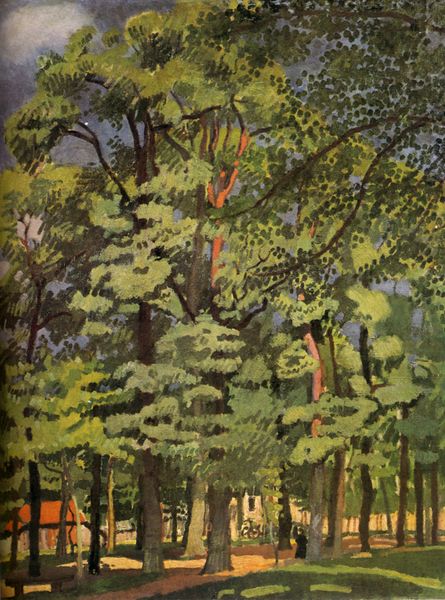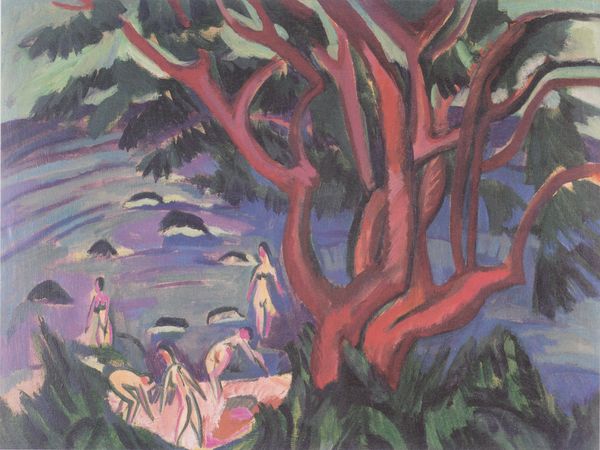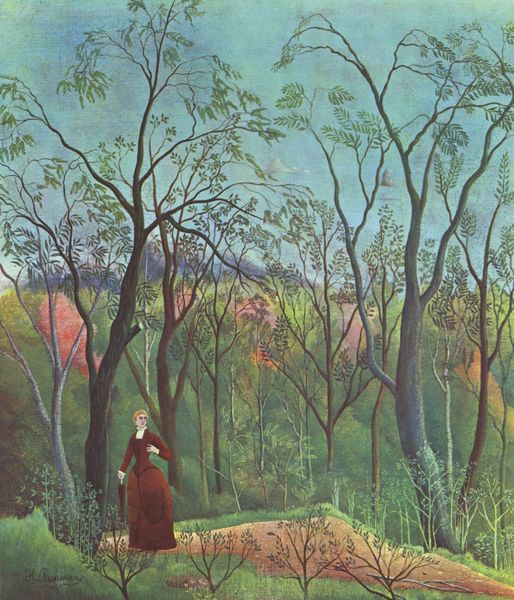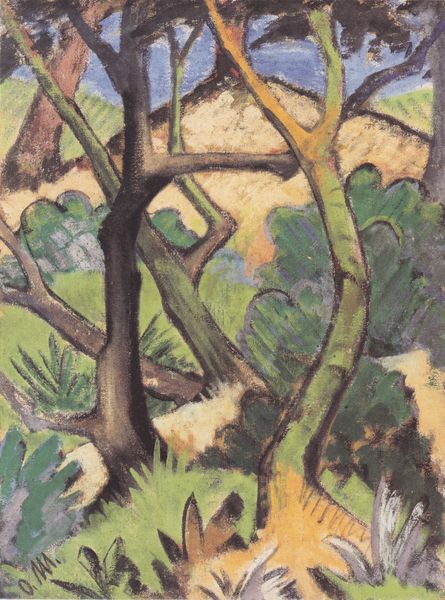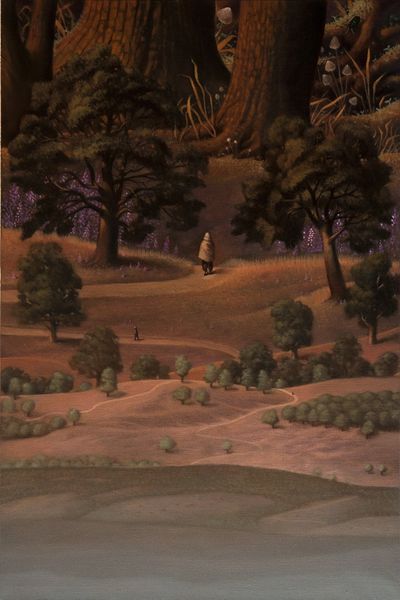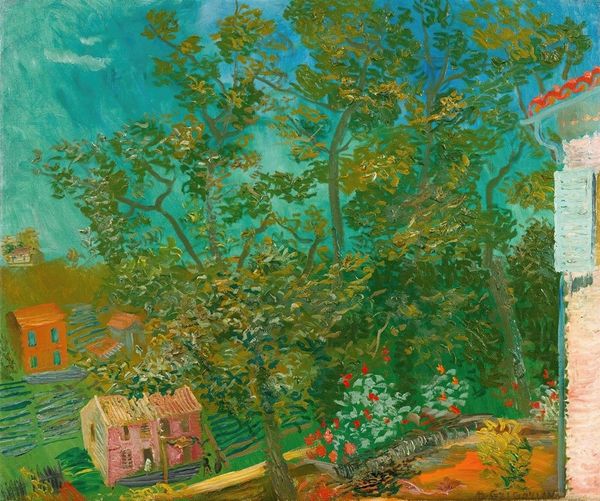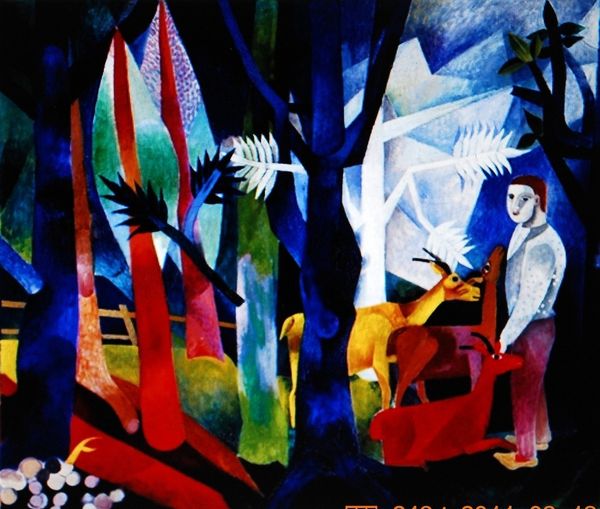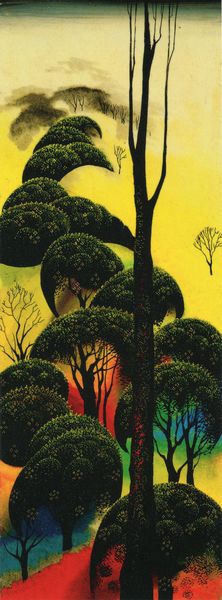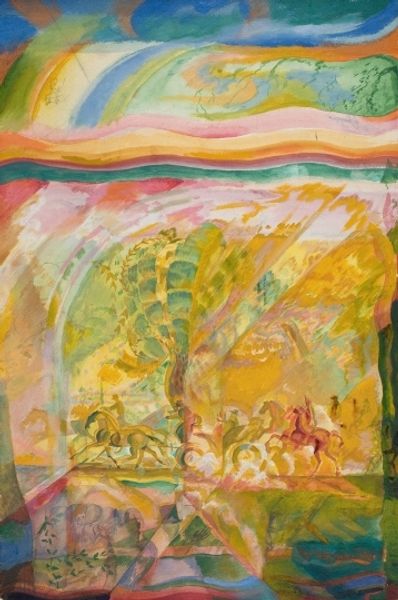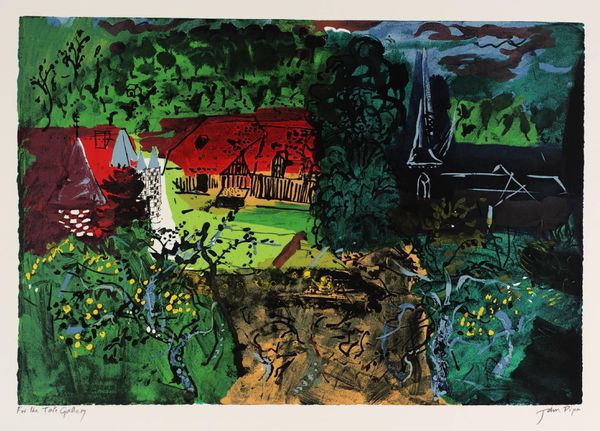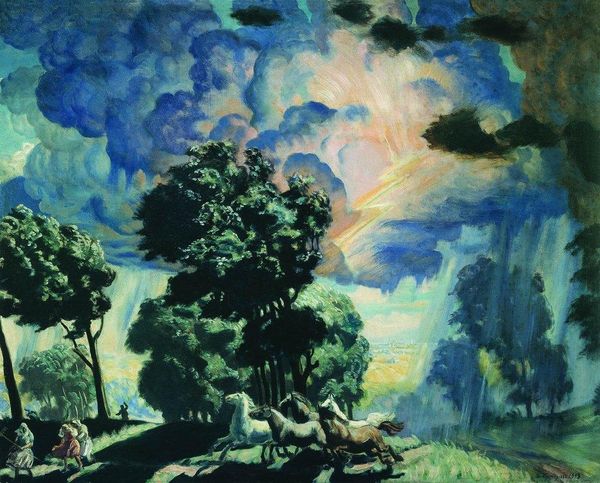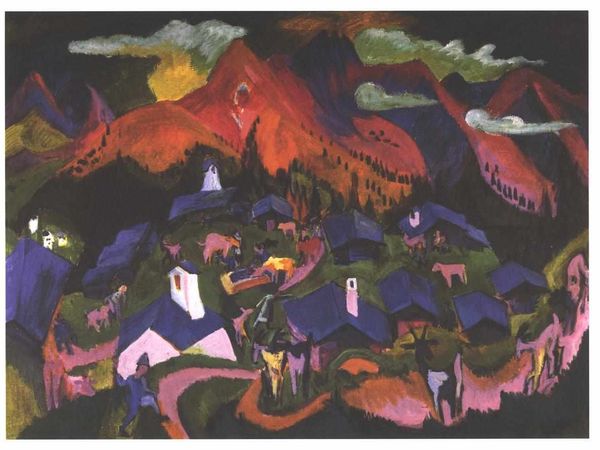
Dimensions: 46 x 55 cm
Copyright: Raoul Dufy,Fair Use
Editor: Raoul Dufy’s "Landscape of Esterel," created in 1926, it's striking how he uses these almost childlike colors to portray the natural scene. It almost has a 'naive' quality to it. I’m curious, how does the historical context shape your understanding of this piece? Curator: Dufy was working during a period that witnessed massive social and technological shifts. Look at the presence of what seems to be an automobile carriage. This hints at the transformation of landscapes from purely agrarian or wild spaces into sites accessible for leisure and tourism for an emerging middle class. Does that alteration change how the scene is constructed and experienced by viewers, then and now? Editor: It does, that carriage places it right at that turning point. Was this style typical of landscape art at that time? Curator: Landscape painting had, of course, been a staple, but Dufy's approach reflects a move away from traditional representation. The expressionistic colors and simplified forms reject academic naturalism. Consider the socio-political atmosphere of post-World War I Europe, where many artists questioned established norms, and consider whether the seeming naiveté is masking other social critiques? Editor: So it's not just about depicting a place; it’s about engaging with bigger cultural and societal themes. I hadn't considered the post-war perspective. Curator: Exactly. Art isn’t made in a vacuum. Thinking about the art market too, how landscape paintings like this served as consumable images of leisure, feeding into a growing tourism industry. The museum as a context shapes our engagement. Editor: It’s fascinating how understanding the historical factors can change my perception. I see more than just a pretty scene now. Thanks for helping me understand it on a deeper level. Curator: Absolutely! Hopefully, recognizing the connections between art and the society in which it was created enables a more critical understanding of this historical moment and how those political contexts informed what ended up in the art canon.
Comments
No comments
Be the first to comment and join the conversation on the ultimate creative platform.
